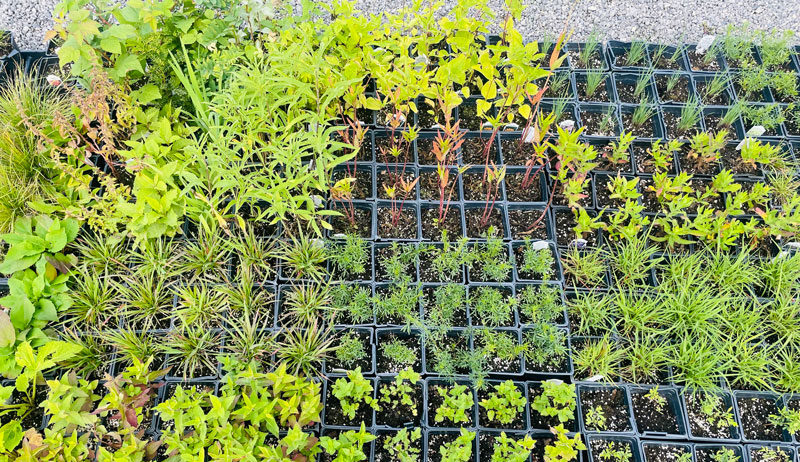
There is always extra space on the farm, homestead or backyard for something other than vegetables and fruit. Why not consider a spot of prairie?
Tallgrass prairie is one of the most endangered terrestrial ecosystems on the planet. These prairies used to stretch across North America in the U.S. and Canada. They were home to bison, many bird and butterfly species, and other wildlife. They were edible and medicinal wild lands with fruits, berries, herbs and game.
Tallgrass prairies also are powerful carbon sinks, able to sequester and store carbon in the soil. They tolerate drought with deep root systems and a complex population of site-suitable plant species.
We can create prairie restoration projects on our properties and bring back some of the species and benefits these ecosystems have.
Where Should You Add Prairie?
You can plant a spot of tallgrass prairie in as little as 25 square feet. With proper site-suitable design, a selection of prairie plants could suit a low-lying area in your yard, even gathering water from a rooftop downspout.
They can also be equally suitable to the dry, ditch-side spaces along roads in your community.
On the farm, prairie plants can be re-introduced into pasture to provide diverse fodder for livestock. And market gardens and organic growers can create prairie buffer strips along fence lines to maintain buffers needed for organic certification.
Riparian buffers on larger properties can use trees and prairie plants to maximize reduction of stormwater overland flow into river systems. As such, they can act to sink nutrient, pesticide and silt run-off.
Prairie bird species are rapidly declining in America. Monarch butterflies are a well-known species in need of habitat restoration, too. But these creatures and more can easily make a home in even a small prairie spot in your yard.
Meanwhile, bison farms—a lucrative niche in the grass-fed beef industry—can carve out a further specialty by returning these animals to their native forage.
Good Quality Plants
An import starting place for prairie restoration is good quality plants and seed. For projects under 1/4 acre, transplanting is recommended. Transplants are best started in deep cells with adequate room for root development.
Prairie plants should be encouraged to send their roots deep right away after planting. Look for plants with healthy roots—not root-bound, yellowing, water-logged and/or decaying. Source form local, specialized nurseries or start some yourself.
Read more: Maximize your seed starting success with these tips and tricks.
Techniques
Techniques popular in market gardens—such as bed forming, packing and row marking—will serve well for ecosystem restoration projects. You want a firm seed bed, loose below to facilitate transplanting and firm on top to prevent exposure of young roots. Top this with 1 inch of compost and roll/pack it as a topsoil (A horizon).
Mark the rows 12 inches apart and plant your transplants every 12 inches in the row. Make sure to alternate between large and small plants in swathes to allow partitioning of space and resources.
Creeping ground covers and tall plant will compliment well. Once planted, mulch between the plant (in and between rows) with leaves, grass clippings or wood chips. Don’t use hay with grass seeds!
Make sure to add nitrogen sources in the first years to help break down the carbon-rich mulch.
Establishment
Plants like big bluestem take their time to establish. Many prairie plants will eventually grow over your head every year. But initially they are slower to establish than other landscaping plants/grasses.
Keep the plantings watered in dry periods in the first year, but don’t overdo it. Be patient, and remember we want those roots to reach down into the soil to look for water so they become drought resistant!
Don’t Forget Some Edibles
Add some wild bergamot, mints, strawberries, raspberries, chokecherries and saskatoon to the mix for large spots. These edibles are common in prairies, especially along woodland edge environments.
You can have your prairie and eat it too!
Want to learn more? Check out my lecture on modular prairie design for examples and designs!
Grow On1
Zach





